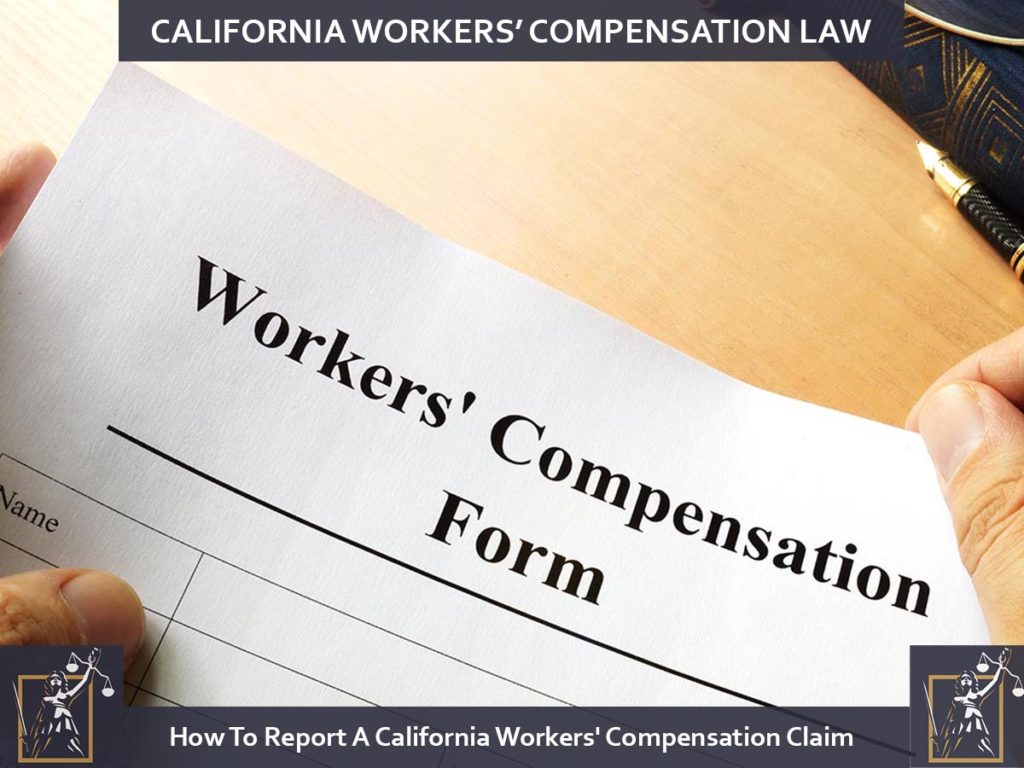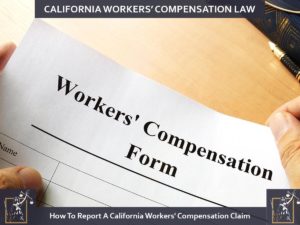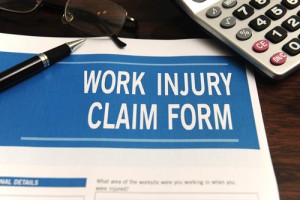How To Report A California Workers’ Compensation Claim

#calinjurylawyer #workinjurylaw #lawblog #workerscompensation #reportclaim #californialaw #dwc-1 #claimform #humanresources #employmentlaw
Report Work Related Accident Injuries to Workers’ Comp. Claim Attorney
Why Report a California workers’ compensation claim?
Work-related accident injuries are extremely common occurrences, however, many people do not know what to do in the event they are involved in one. As a general rule, employers should instruct their employees on how to go about reporting workplace injuries. Unfortunately, many employers in California do not follow this seemingly logical task. Whether by inadvertence or on purpose, not informing workers on how to report an on the job accident or occupational disease is a common practice among employers. This practice leaves many employees in California unaware of exactly how and who to report a work injury to at their company. In this article, I am going to talk about how to report a California workers’ compensation claim. Nothing that we communicate to you here should be construed as formal legal advice for a person’s particular situation. That means that you cannot take what I say in this blog as advice from me about what you should do in your unique situation. That can only be had after speaking directly with a licensed attorney like myself. Instead, this post will focus only on the general way injuries are reported in California.
General Steps in Reporting A Work Accident Injury
Report A California Workers’ Compensation Claim – When an accident occurs at work and it is believed by the injured worker that an injury has arisen from it, it should be reported to the employer as soon as possible. The same goes for occupational disease, which is a work-related injury that arises from an occupational hazard such as repetitive work activities involved in a particular occupation. Also known as a cumulative trauma, these include but are not limited to repetitive typing, stooping, walking, sitting, or lifting, where such activities result in injury. Whether the injury resulted from a work accident or from cumulative trauma, the employee should report it as soon as they believe it was caused by their job.
Company Protocol Should Be Followed
The employee should follow company protocol where their employer has provided explicit guidance on how to go about reporting an on the job injury. However, if those procedures are not effective, are intended to and/or result in the worker unable to make a workers’ compensation claim, the employee should take matters into their own hands by attempting to report the injury to the highest ranking accessible individual at their company. This might be the head of Human Resources (or HR), the lead manager, or even the corporate office representative. In the event successful reporting is still not achieved, hiring a lawyer to pursue your workers’ compensation case directly against the insurance company in a court of law might be the best and only option that you have.
If you are having issues reporting a work injury and want to report a California workers’ compensation claim, call my office at 844-584-8444 to speak directly to a lawyer. I am a licensed attorney who is standing by to speak with you about your particular situation, give you advice, and offer formally offer you my assistance if I believe my representation would benefit you. Those who reach out will not be charged for the initial consultation. Should my firm be retained to take on the workers’ compensation case, no fees or costs are charged unless a monetary recovery is obtained via settlement, arbitration, mediation or trial.
For information on my philosophy, or to learn more about workers’ compensation, visit my website at calinjurylawyer.com.
The Employer Must Notify the Workers’ Compensation Insurance Company

work comp claim form
Once the employer is notified of a work-related accident injury (requiring medical attention beyond first aid), they are required to provide the injured worker with a DWC-1 Claim Form (or just simply called a “claim form”). The worker is to complete their portion of the form and return it to the employer. The employer is then required to complete their portion of the form and notify their work comp insurance carrier within 24 hours by providing the claim form itself to the insurance company. The claimant should be making sure that they also receive a copy of the completed DWC-1 (with employer’s portion completed as well). The carrier is then required to authorize up to $10,000.00 of medical care until the claim is either accepted or denied (the law gives the insurance company 90 days to admit or deny the claim. An untimely denial – one after the 90 day denial period – creates a reputable presumption that the injury is work related). Although the carrier is allowed to pick the doctor for the first 30 days following submission of the claim form, the claimant is allowed to select a new doctor (from within the medical provider network) following the first 30 days after reporting.
Seek Workers’ Compensation Lawyer Help For Reporting Troubles
The problem many have is that they do not know any of the rules in the California Labor Code about reporting their health issue to their employer. Many are scared to even inquire with the company or report a California workers’ compensation claim for fear of losing their job. For those who are having trouble, the best thing to do is to consult with a licensed work injury attorney professional ASAP. While many adverse consequences can result from a failure to report or file a formal claim, the insurance carrier does not suffer any severe penalties when reporting is not properly achieved, even when failure is through the purposeful act of the company or manager. This means that workers must be diligent to know and exercise their rights in a timely fashion. If you need help, call me immediately to see if there is anything that we can do to aid you in the pursuit of an injury claim.
#calinjurylawyer #workinjurylaw #lawblog #workerscompensation #reportclaim #californialaw #dwc-1 #claimform #humanresources #employmentlaw


